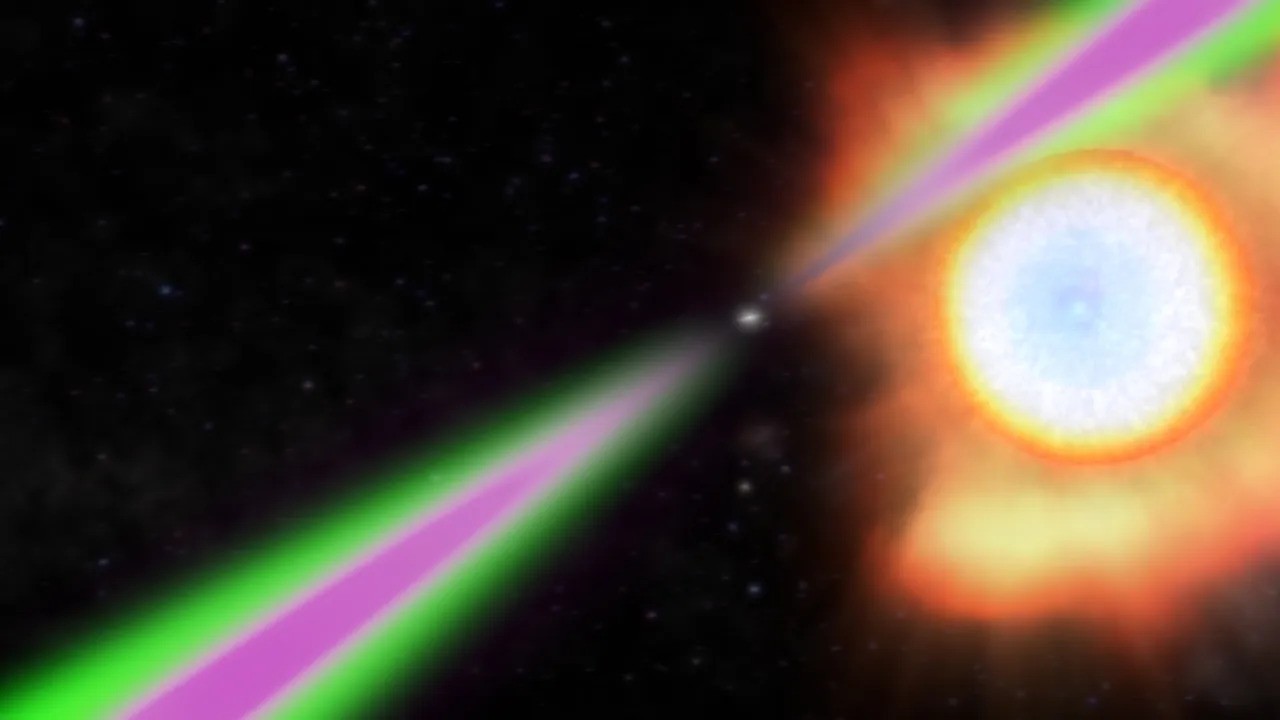The pulsar PSR J2215+5135 belongs to the so-called “spider”. It is located in a close binary system with a degenerate star. Recent facts have revealed new details about how they interact with each other. The pulsar PSR J2215+5135 belongs to the so-called “spider”. It is located in a close binary system with a degenerate star.

What are “spider pulsars”?
Astronomers from Stanford University in California conducted joint X-ray and optical studies of the massive “spider” pulsar PSR J2215+5135. The results of the observation campaign presented in an article published on May 22 on the arXiv preprint server provide more clues about the nature of this pulsar.
Pulsars with a rotation period of less than 30 milliseconds are known as millisecond pulsars. The researchers suggest that they form in binary systems when an initially more massive component turns into a neutron star, which then unwinds due to the accretion of matter from the companion.
The class of extreme pulsars with semi-degenerate companion stars is called “spider”. These objects are called “black widows” if the companion has an extremely low mass (less than 0.1 times the mass of the Sun), or “redbacks”. This name is a reference to the arthropod species in which the female devours the male.
In “spider” pulsars, gamma radiation and relativistic particles from the pulsar wind irradiate the companion, which leads to the birth of a powerful stellar wind. Observations show that when the pulsar wind and companion emissions collide, they form a powerful shock front.
Pulsar PSR J2215+5135
PSR J2215+5135 (or J2215 for short) is located at a distance of about 9,800 light-years from us. This is a “redback” millisecond pulsar with a rotation period of 2.61 milliseconds. The neutron star in the system has a mass of about 2.24 times that of the sun, while its companion is estimated at about 0.3 times the mass of the Sun. The orbital period of J2215 is 4.14 hours, and its dispersion is 225.6 pc/cm3.
Recently, Andrew Sullivan and Roger Romani from Stanford University used ESA’s XMM-Newton spacecraft to get a closer look at J2215. Based on the XMM-Newton data, they constructed the orbital light curves of J2215 and used them to model the properties of the system.
New observations of the pulsar PSR J2215
New observations have shown that the neutron star in J2215 has a mass of about 2.15 times the mass of the Sun, and the companion star loses its mass at the level of 0.0003 Earth masses per year. Therefore, the researchers calculated that J2215 could become an isolated pulsar.
Based on the X-ray analysis of J2215, the researchers found that the shock front is centered around the pulsar. This is typical for “black widows”, because in such systems the wind of the companion dominates the wind of the pulsar, so the shock wave is concentrated around the pulsar, whereas in the case of heavier companions it is usually concentrated around them.
According to phys.org


